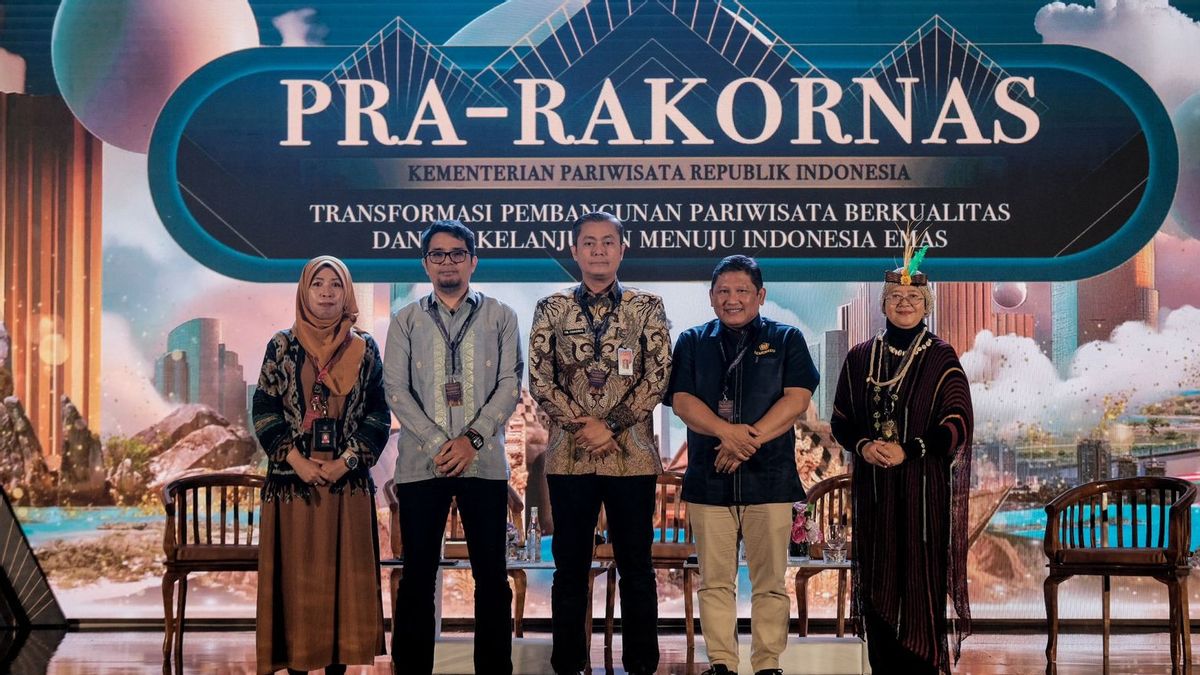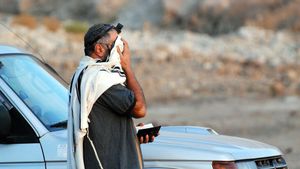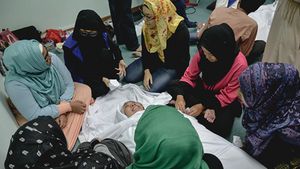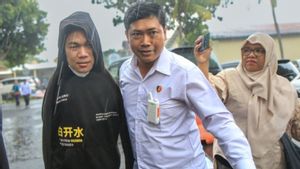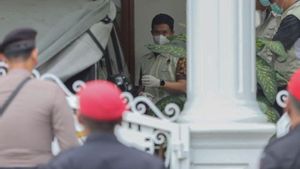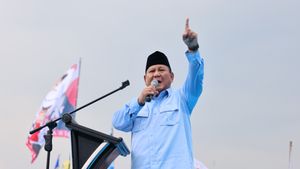JAKARTA - The Ministry of Tourism (Kemenpar) strengthens synergy and collaboration with stakeholders both at the central and regional levels to support tourism planning and budgeting as well as human resource development (HR) in order to realize inclusive, quality, and sustainable tourism tourism according to the direction of tourism policy in the 2025-2029 RPJMN.
Head of the Finance Bureau of the Ministry of Tourism and Creative Economy, Iin Dwi Purwanti, in the Pre-Rakornas Kemenpar RI, which took place at Pullman Central Park, Jakarta, Wednesday (4/12/2024) said tourism development could be optimal if it was supported by synergy between related ministries/agencies.
"Because the target set for the tourism sector is very high. Meanwhile, the challenges we face today are extraordinary. But there are strategies that we need to follow with policy directions in the RPJMN and RKP. And of course to achieve the target requires strong collaboration," said Iin.
There is great hope for the tourism sector as reflected in the national tourism development policy in the 2025-2029 RPJMN. With the performance target in 2025, including the movement of domestic tourists of 1.08 billion, foreign tourist visits of 17-18 million, tourism GDP of 4.6 percent, to tourism foreign exchange reaching 22.1-25.2 billion US dollars.
Previously, the budget ceiling that had been set for the Ministry of Tourism for 2025 was IDR 1.7 trillion. However, with the establishment of the Ministry of Creative Economy, the budget value that has been set is then allocated to the Ministry of Tourism and Creative Economy with details worth IDR 1.4 trillion for the Ministry of Tourism and IDR 279 billion for the Ministry of Creative Economy.
Therefore, the synergy and collaboration of all relevant stakeholders is needed to be able to maximize the work programs of the Ministry of Tourism. Starting from connectivity, accessibility, policy relaxation or regulation, to human resource development which is the foundation of the development of the Indonesian tourism sector.
Representative of the Directorate of Industry, Tourism and Creative Economy, Ministry of National Development Planning/BAPPENAS, Wahyu Wijayanto, said that tourism is one of the sectors that is expected to be an accelerator for the national economic growth scenario of eight percent and this will be the foundation for achieving Indonesia Gold 2045.
"Currently BAPPENAS is preparing an eight plus one strategy for accelerating economic growth policy which includes tourism. Of course, we hope that in addition to tourism, it will contribute to increasing foreign exchange value, it will also have an impact on people's welfare," said Wahyu.
Director of Synchronization of Regional Government Affairs 3, Ministry of Home Affairs, Chaerul Dwi Sapta, said that the budget allocation for tourism affairs at the provincial and district/city levels needs to be monitored for its implementation and utilization.
"HR mapping is also very much needed for the development of quality human resources," said Chaerul.
The Director General of Vocational and Productivity Training, Ministry of Manpower, Agung Nur Rohmad revealed that his party has quality and integrated training programs through digital platforms Ready to work by strengthening industrial cooperation through the Regional Government and FKLPI, private training institutions, industry, and digital economy practitioners.
"The Ministry of Manpower can subsidize existing and more comprehensive human resource training at the Ministry of Tourism," said Agung.
SEE ALSO:
Plt. Director of Higher Education and Resources for Vocational Higher Education, Ministry of Basic and Secondary Education, Fajar Subkhan conveyed PP Number 68 of 2022 concerning the Revitalization of Vocational Education and Vocational Training, which focuses not only on the creation of working human resources but can become human resources that have an entrepreneurial spirit.
Fajar also emphasized that whatever the curriculum is, of course, it must be relevant to the duties and needs of the industry. Moreover, the tourism sector is projected to require 12 million workers. This figure shows that the contribution of the tourism sector in Indonesia to the total national workforce is estimated to reach 13-15 percent.
"So the preparation of tourism human resources is the most important thing. Of course, the synergy of various parties involved, especially in the field of tourism to prepare human resources is very important, so it is no longer competition, but let's work together to make this happen," said Fajar.
In the Pre-Kornas Kemenpar session I which discussed the 'Policies for Planning and Budgeting of Tourism and Collaboration Centers' were present as resource persons representing the Directorate General of Budget, Ministry of Finance, Amnu Fuadiy.
Meanwhile, in session II which discussed the 'Sinergity and Collaboration of the Development of Tourism Human Resources', other resource persons were attended, namely the Dirpamobvit Korsabhara Baharkam Polri, Suhendri.
It can be concluded that in session I and session II the relevant ministries/agencies agreed to establish a multi-sectoral collaboration based on Asta Cita, the Red and White Cabinet, to create quality tourism that is safe and sustainable.
In addition, the development of competencies that focuses on digitization, hospitality skills, risk management and sustainability are the main needs in the transformation of the tourism sector towards Golden Indonesia in 2045.
The Pre-Rakornas was also attended by echelon I and II officials within the Ministry of Tourism, cross-K/L representatives, as well as stakeholders and parekraf perpetrator associations.
The English, Chinese, Japanese, Arabic, and French versions are automatically generated by the AI. So there may still be inaccuracies in translating, please always see Indonesian as our main language. (system supported by DigitalSiber.id)
